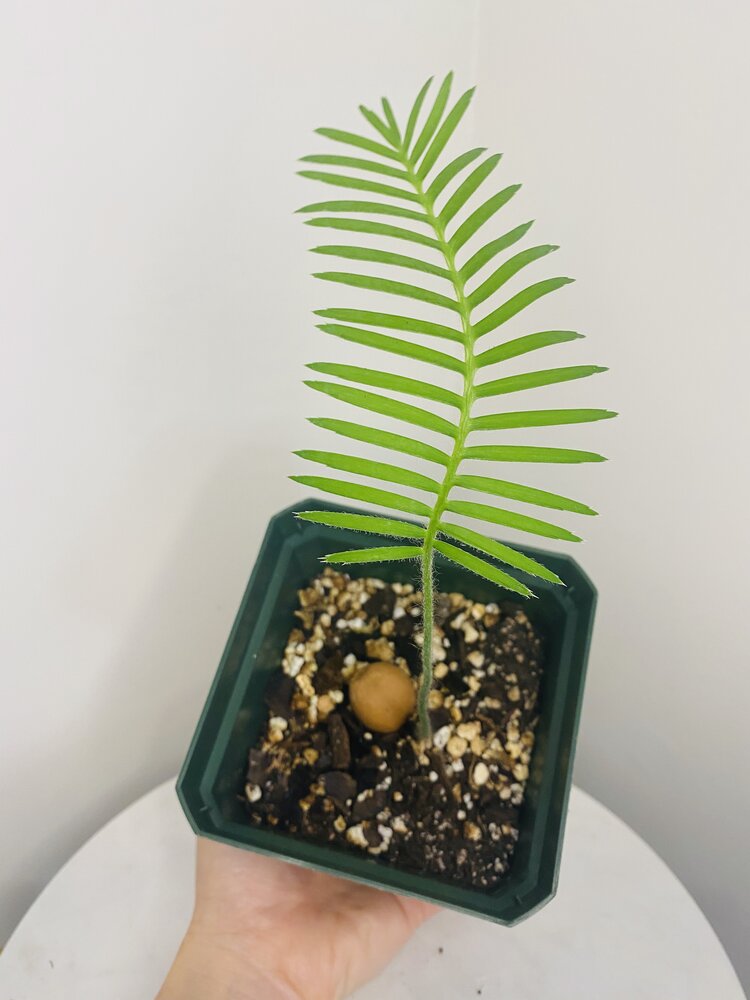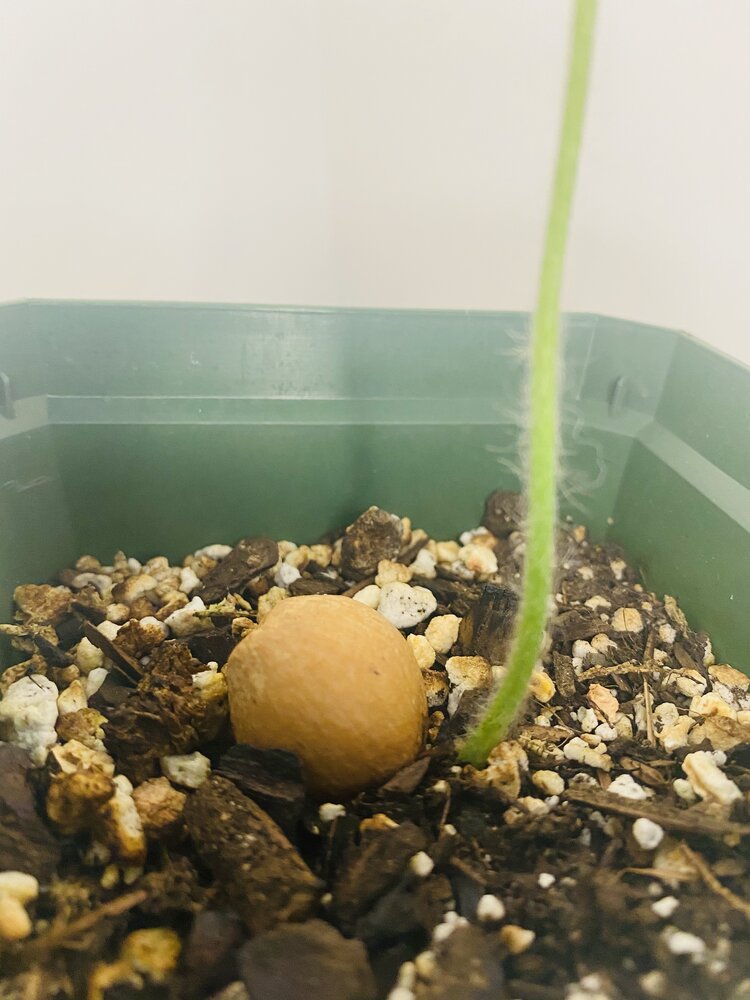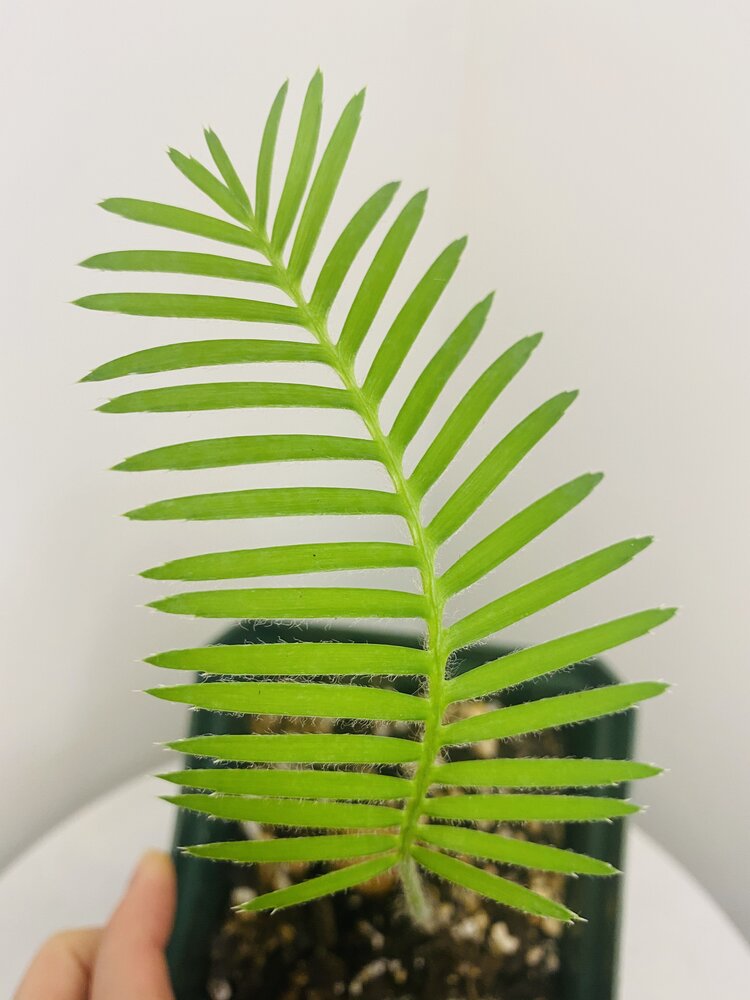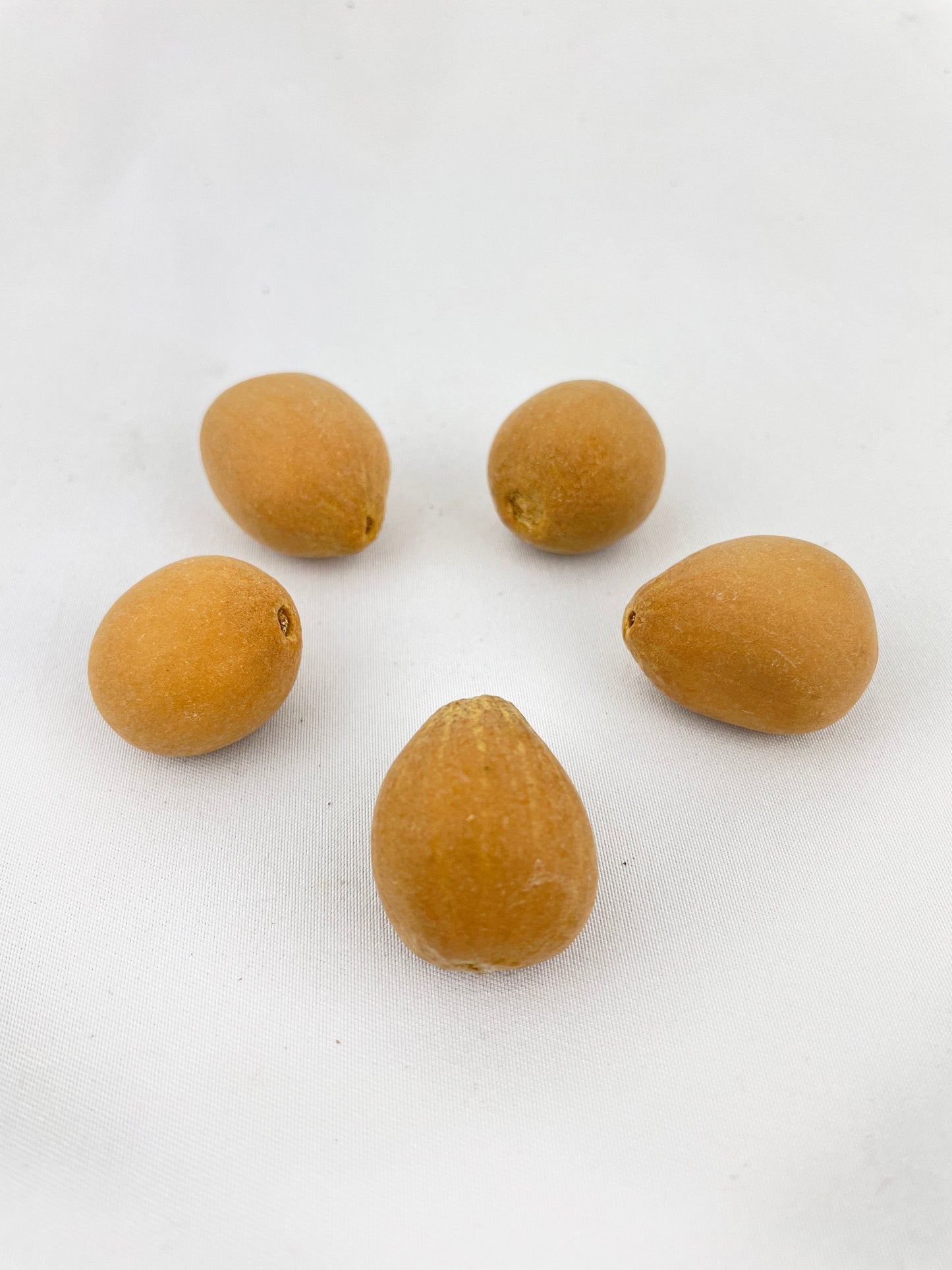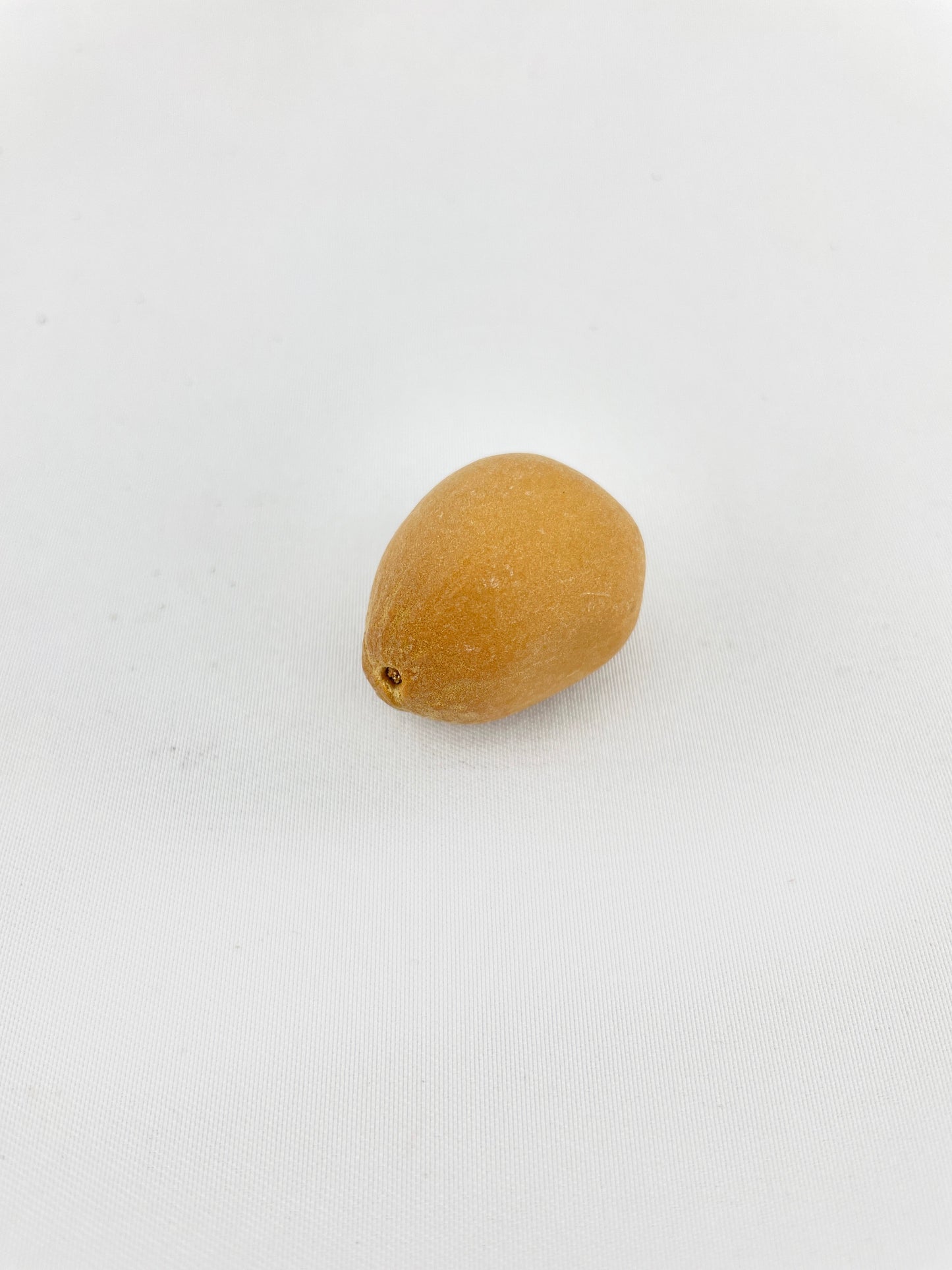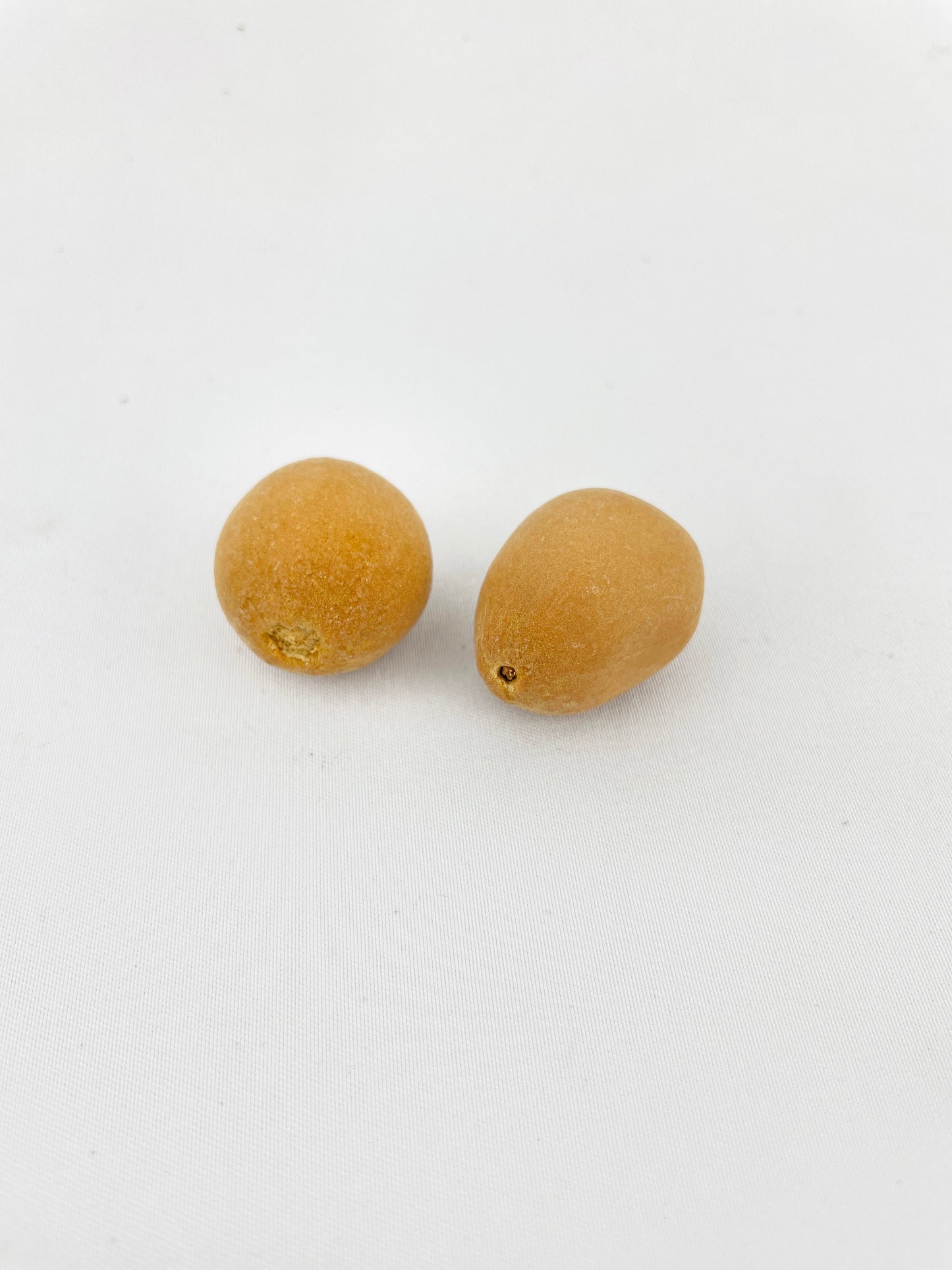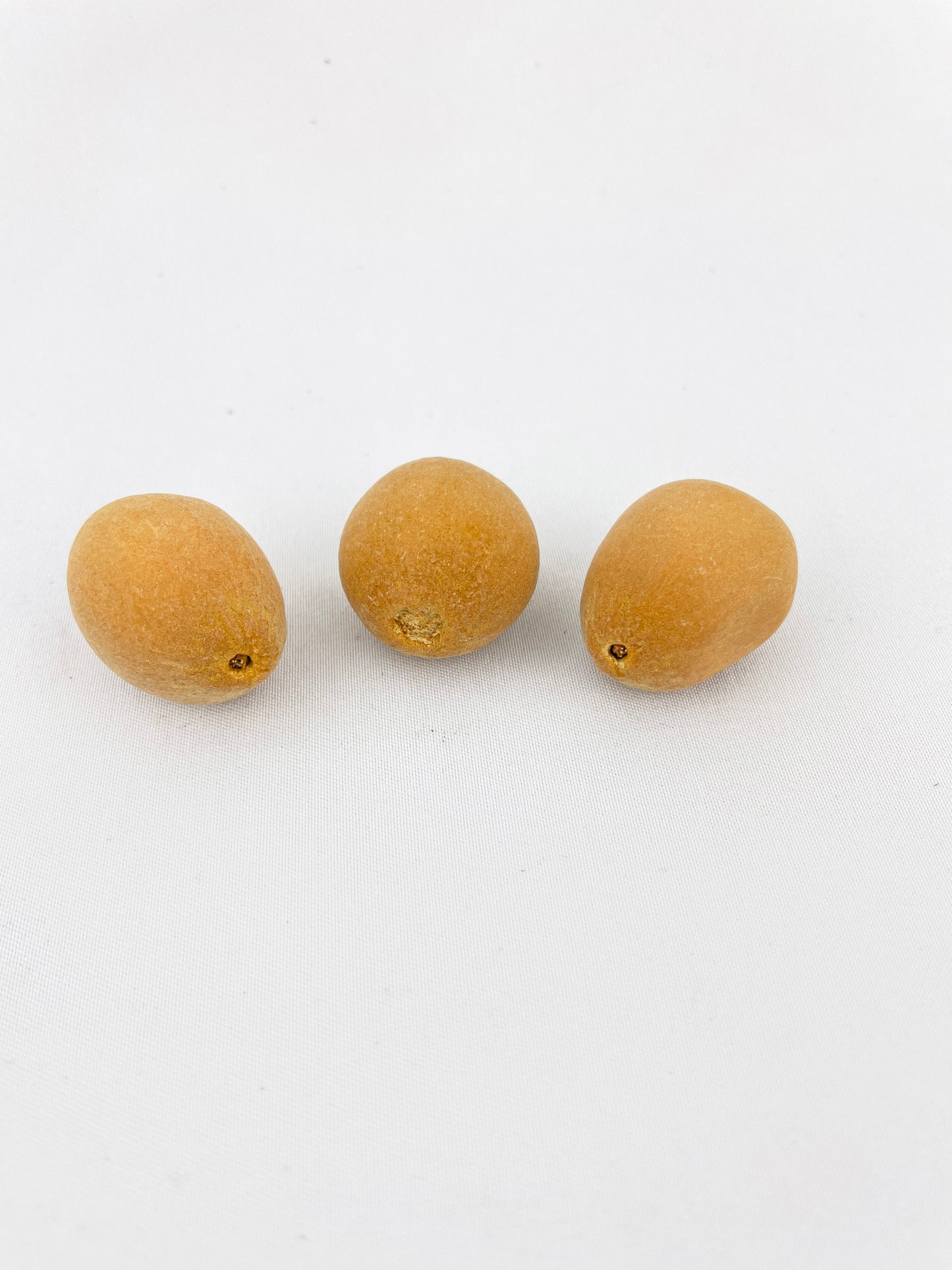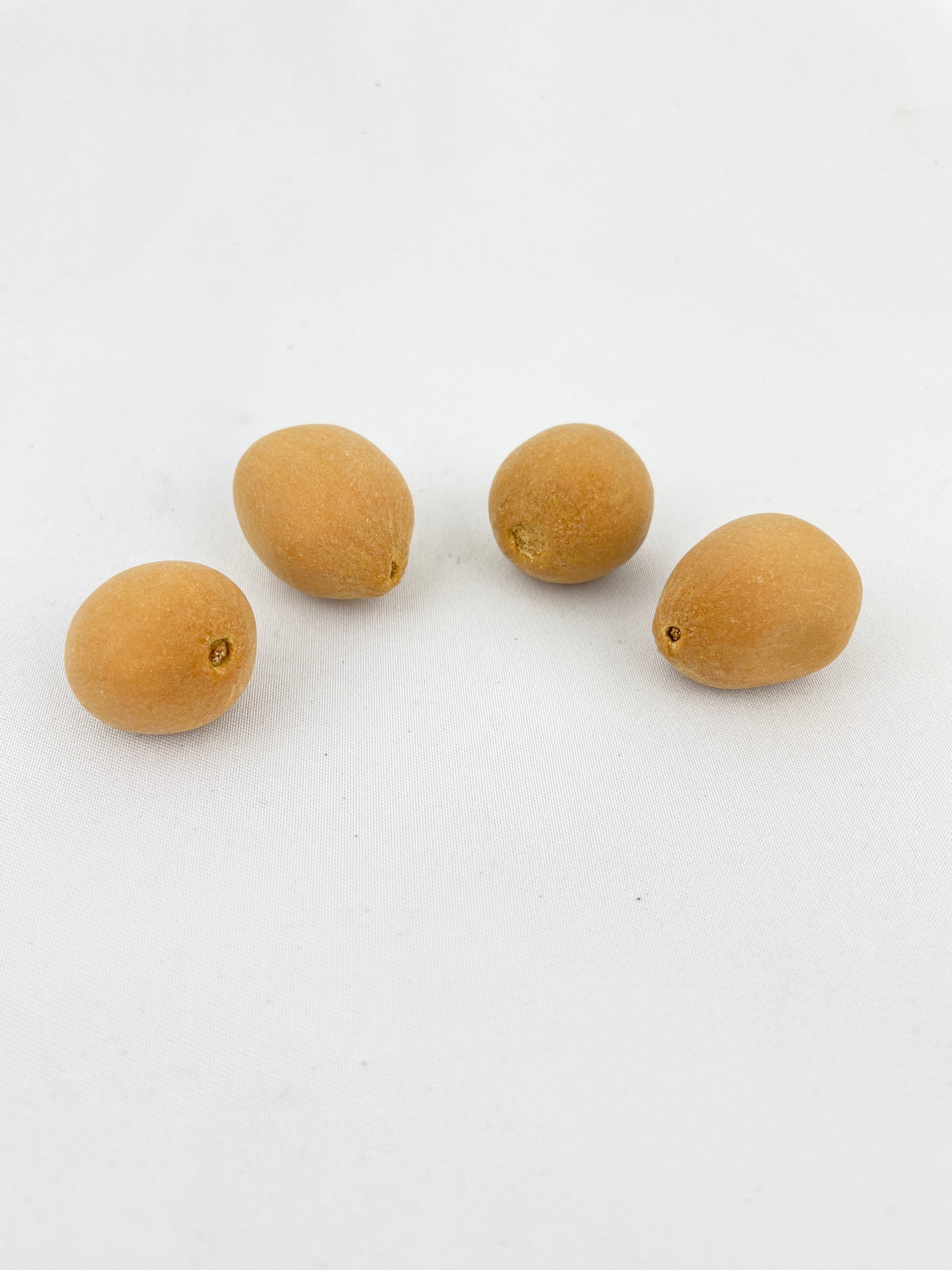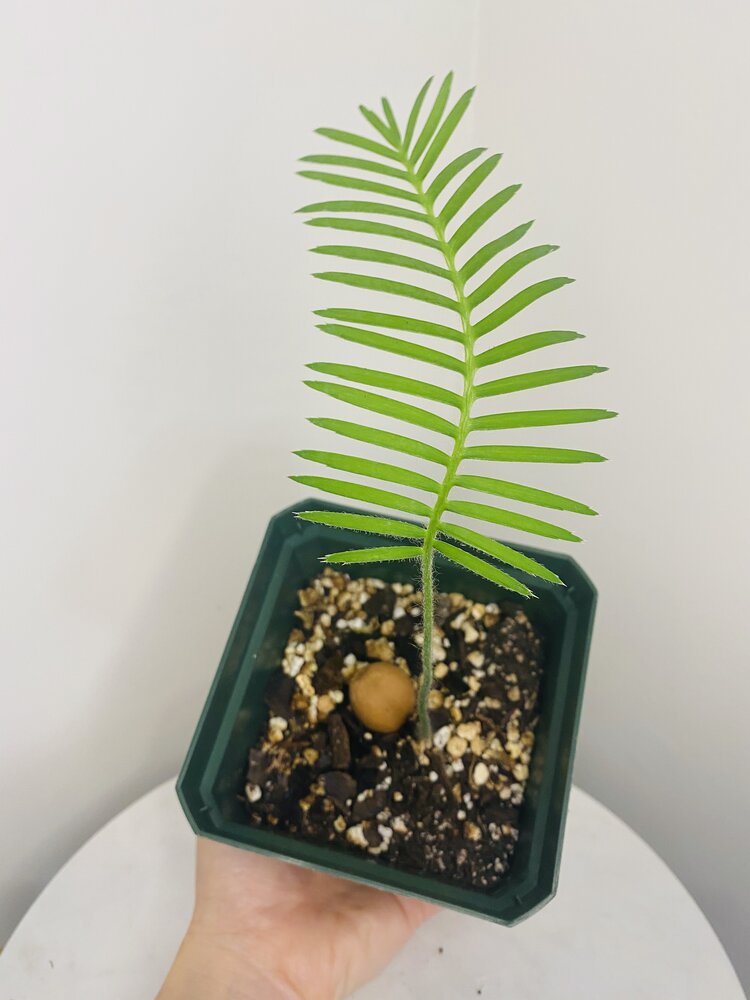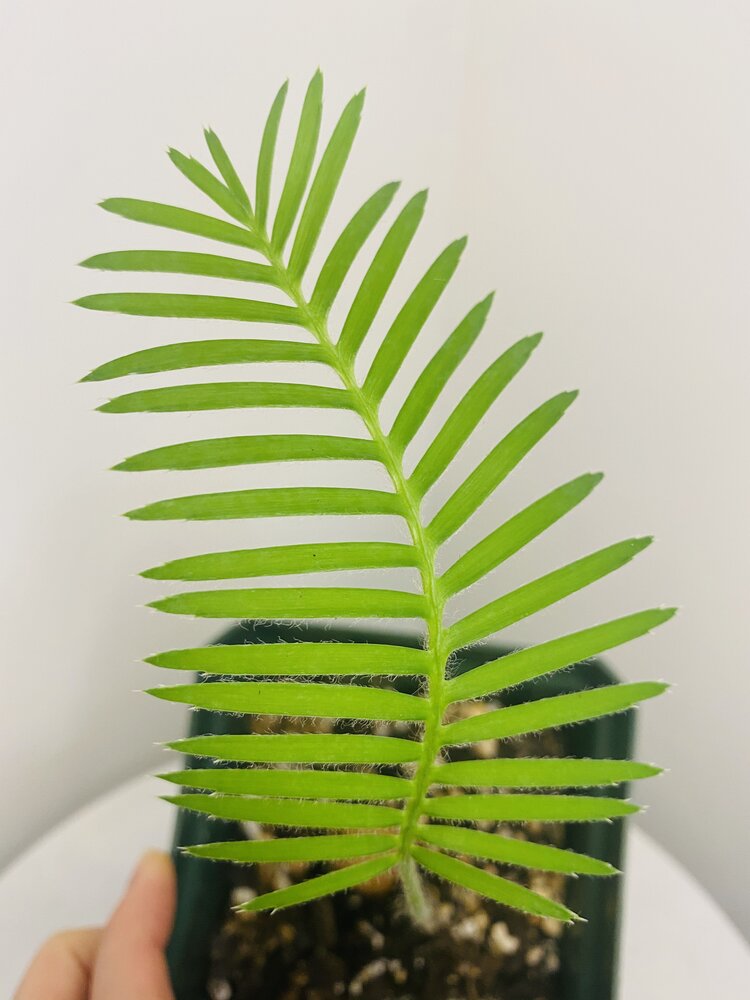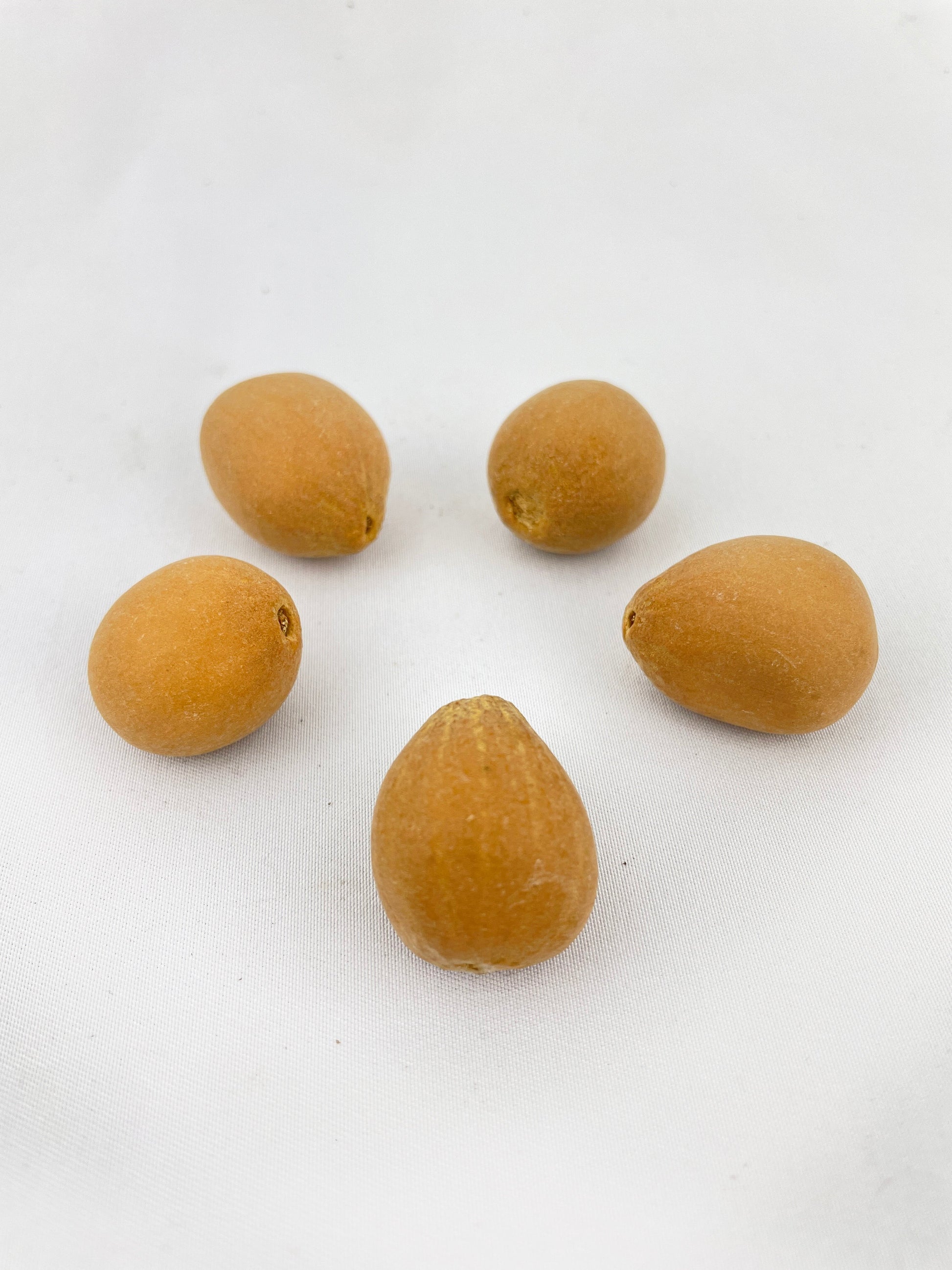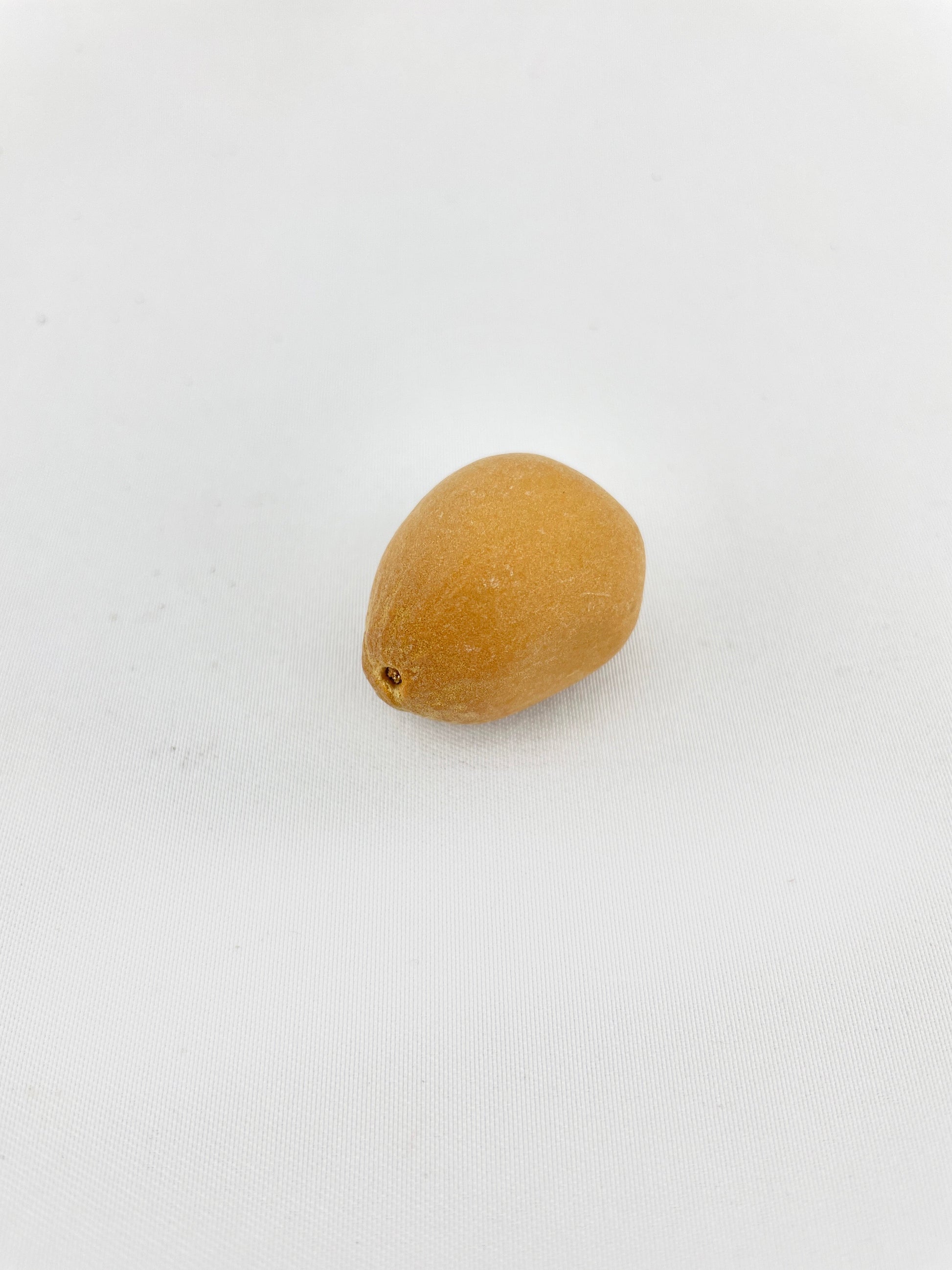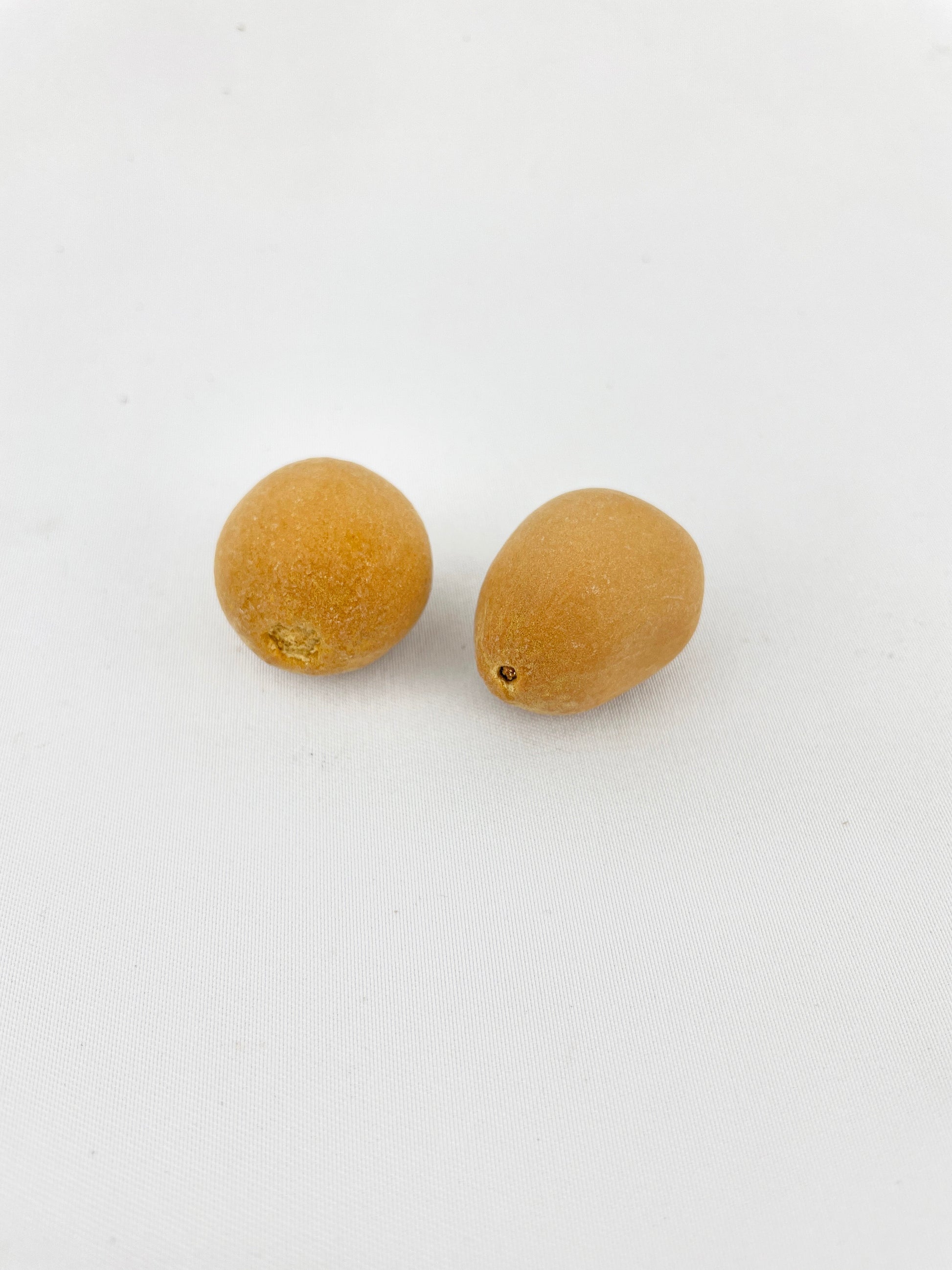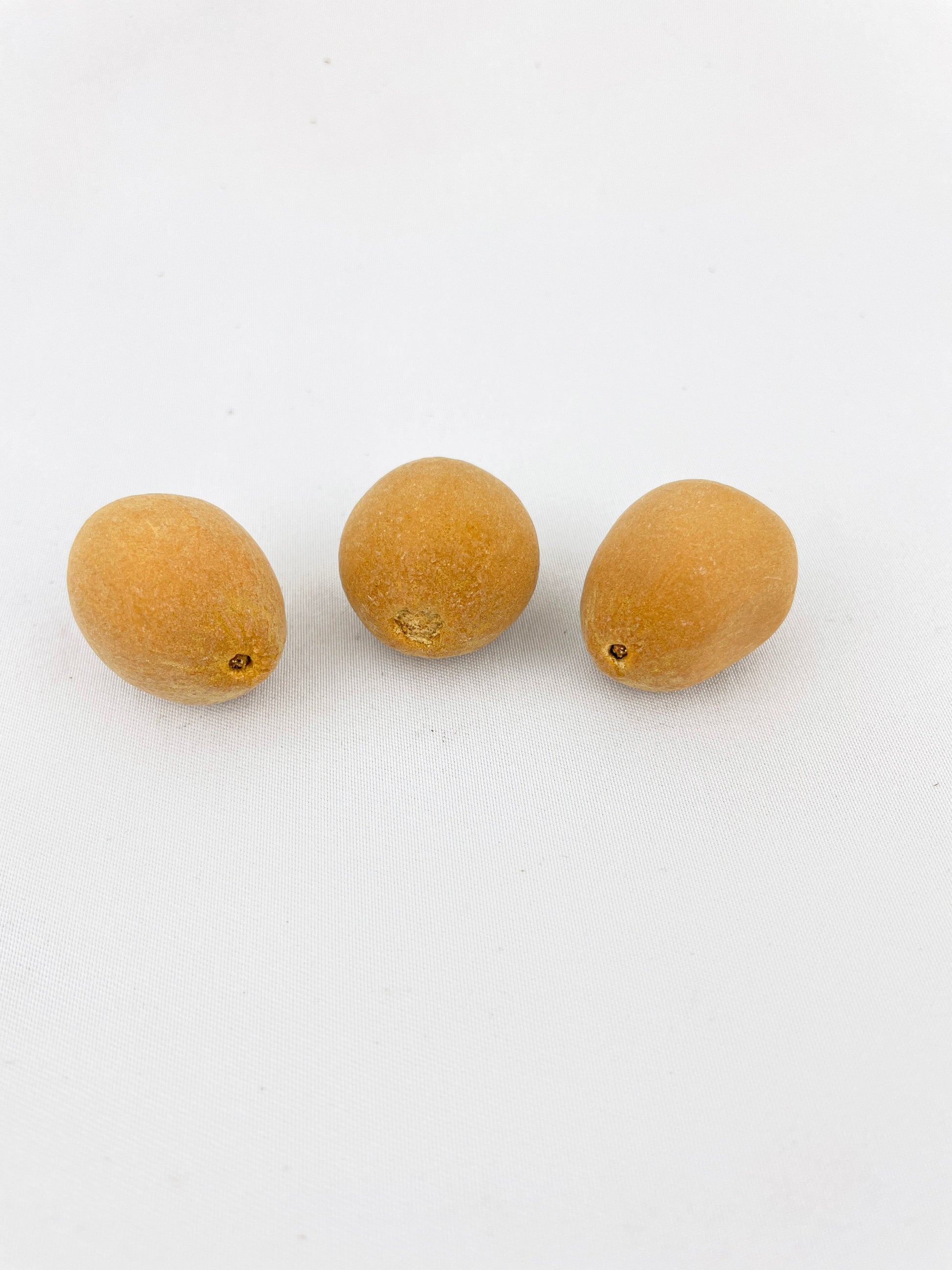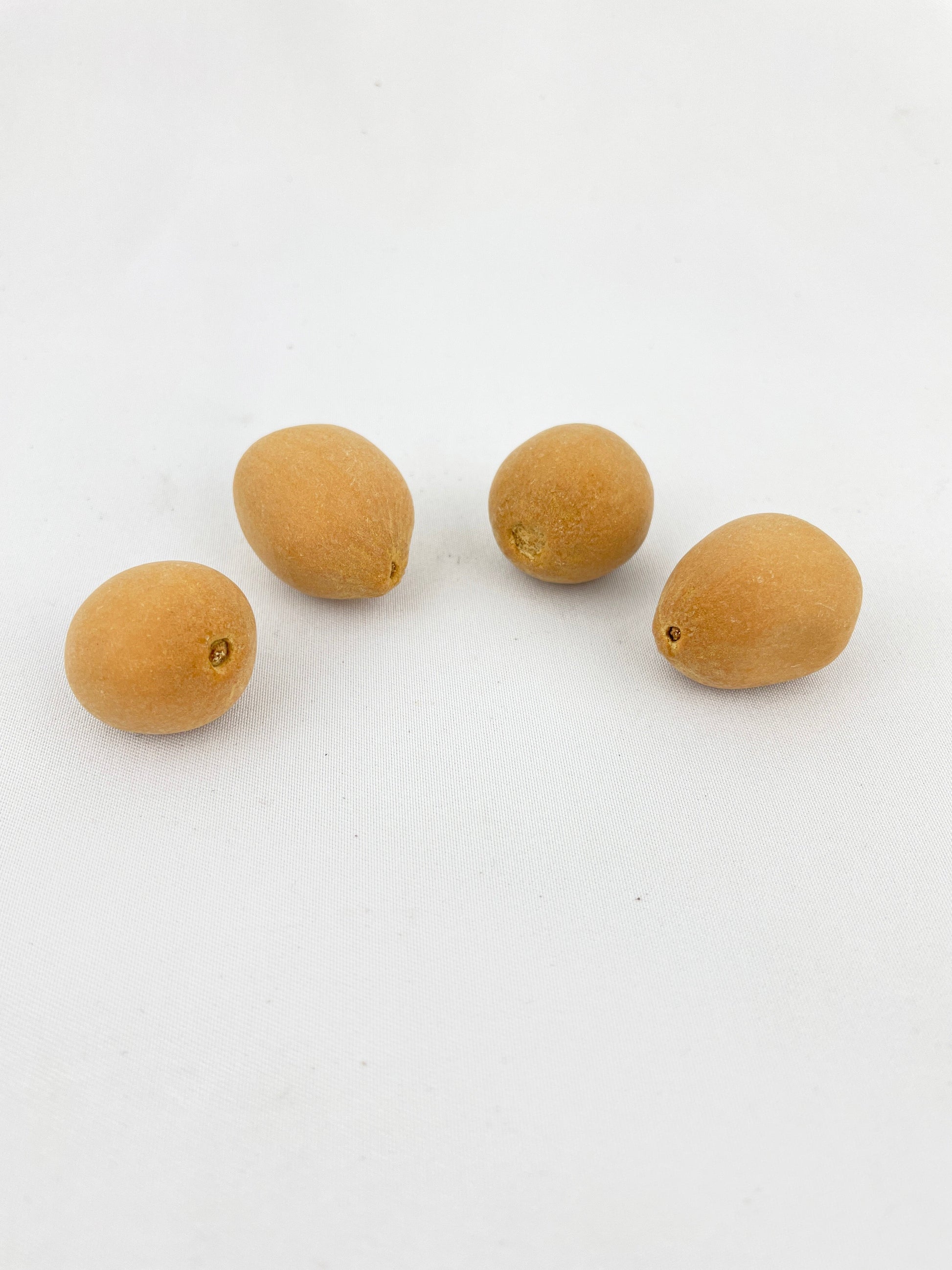Bumble Plants
Dioon Edule by Bumble Plants
Dioon Edule by Bumble Plants
Couldn't load pickup availability
Fulfilled by our friends at Bumble Plants
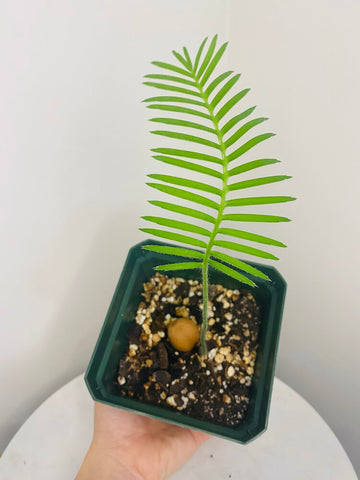 The Dioon edule is not only one of the oldest known seed plants in existence, but it's also called a "chestnut dion." This ancient cycad has leaves like large feathers and they're almost glossy green with some reddish hues throughout their surface area too! The leaves of this plant are palm-like, with an almost glass like appearance. They grow from the center in a spiral pattern and can reach up to 40 inches long when grown naturally without intervention by humans or animals alike!
The Dioon edule is not only one of the oldest known seed plants in existence, but it's also called a "chestnut dion." This ancient cycad has leaves like large feathers and they're almost glossy green with some reddish hues throughout their surface area too! The leaves of this plant are palm-like, with an almost glass like appearance. They grow from the center in a spiral pattern and can reach up to 40 inches long when grown naturally without intervention by humans or animals alike!When you buy a Dioon edule seed online, the seed produces either male or female cones. The females are slightly larger than males, and Dioon Edule seedlings also prefer bright light but can grow under part shade too!
Add water when the soil is dry- make sure there's adequate drainage in your potting mix so that roots don't rot from standing water too often (especially during warmer months).
Dioon edule vs Sago palm: The Dioon edule is a cycad similar to its cousin the sago palm. Dioon edule is also known as the Chestnut Dioon or Virgin palm. The Chestnut dioon is originally from Mexico.
How to care for Dioon Edule
Watering
Dioon edule needs a moderate to large amount of water in the growing season. If the soil mix you choose is chunky and airy, water every 2 – 3 days. If the soil mix you use if more muddy, water every 3 – 4 days. As it ages though this plant becomes more drought tolerant as long as you don't let your soil dry out too much during winter months when watering only amounts necessary for prevention purposes should be enough.
Light requirement
Dioon edules are a plant that prefers bright light, but can also grow in part shade. When you buy a Dioon Edule houseplant, make sure you have sunlight or a grow light to provide ample light for this plant.
Temperature
Dioon edule is a tough plant that can survive down to 22ºF (-5 °C). It's most likely you'll find this cycad growing in USDA hardiness zones 9 through 11, which are the coolest and coldest places on Earth respectively!
Humidity
Dioon Edules love humid conditions however, they can tolerate dry air as well. Aim to be around 50 – 60% humidity.
Toxicity
The Dioon edule is toxic to cats, dogs and children if ingested. However, the seeds are edible when matured and cooked properly.
Size
Dioon Edule is an extremely slow growing plant, but it can reach heights of nearly 160 feet when grown in optimal conditions. It's one of two species within the genus (the other being Dioscorea spinulosum) that bear growth rings and these appear every 20 -30 years or so on its trunk which measures 8 inches wide at most points along its length though typically 12-15".
Fertilizer
Dioon Edules are not fussy plants and do well regardless of having fertilizer or not. A good starter would be one that contains trace elements like magnesium, potassium and phosphorus in addition with equal parts of nitrogen gas (N), potash(K)and muriate thereof; this will help promote strong plants with rapid growth which can withstand harsh weather conditions.
Growth Rate
Dioon Edule is a slow-growing plant, but it can achieve heights of nearly 160' in optimal conditions. It was one out two species within its genus (the other being Diosporum spinulosimum) to bear growth rings that appear every 20 or 30 years when grown carefully with care for their appearance over time as well!
Pruning
There’s no pruning required unless your Dioon Edule is growing wild outdoors. While it will take a long time for Dioons to grow extremely large, you may trim dead leaves at the bottom of the plant to allow more energy for new leaves to sprout.
Propagation
Dioon edule is a tough plant that can be propagated either by planting seeds or division of the bulb. If you want to grow from seed, make sure there are both male and female plants available for pollination before germinating the dampened dirt. You may also cut the Dioon Edule bulb in half and plant them in soil.
Soil Mix
Dioon edule is an extremely versatile plant that can be found in just about any type of soil, with the exception being muddy or non-draining clay. The long lasting and slow growing nature makes it perfect for gardens where space might not always permit specimens much taller than themselves (30cm/1 foot). In fact if you were to stick around after reading this sentence then there's no doubt your eyes will travel up towards my stem which currently stands at nearly 50 centimeters tall.
Repotting
The plant needs to be repotted as its roots grow and expand. You may transplant it outdoors after about four or eight years of growth, but you'll want a pot 1-2" larger than what was used last time so there's room for all that new material.
Common Pests
The hardiness of Dioon can be a double-edged sword. They are less susceptible to fungal diseases and pests but they do have their share on problems, such as stem or root rot caused by excessive watering which leads them towards becoming unthrifty plants with poor growth patterns; scale insects that love munching away at leaves under hot sun rays (literally); caterpillars making dramatic transformations from green leafed representations into something more colorful before your eyes
Common Problems
Dioon edules problems are usually related to stem and root rot which is caused by over-watering or planting in soil that holds too much water.
